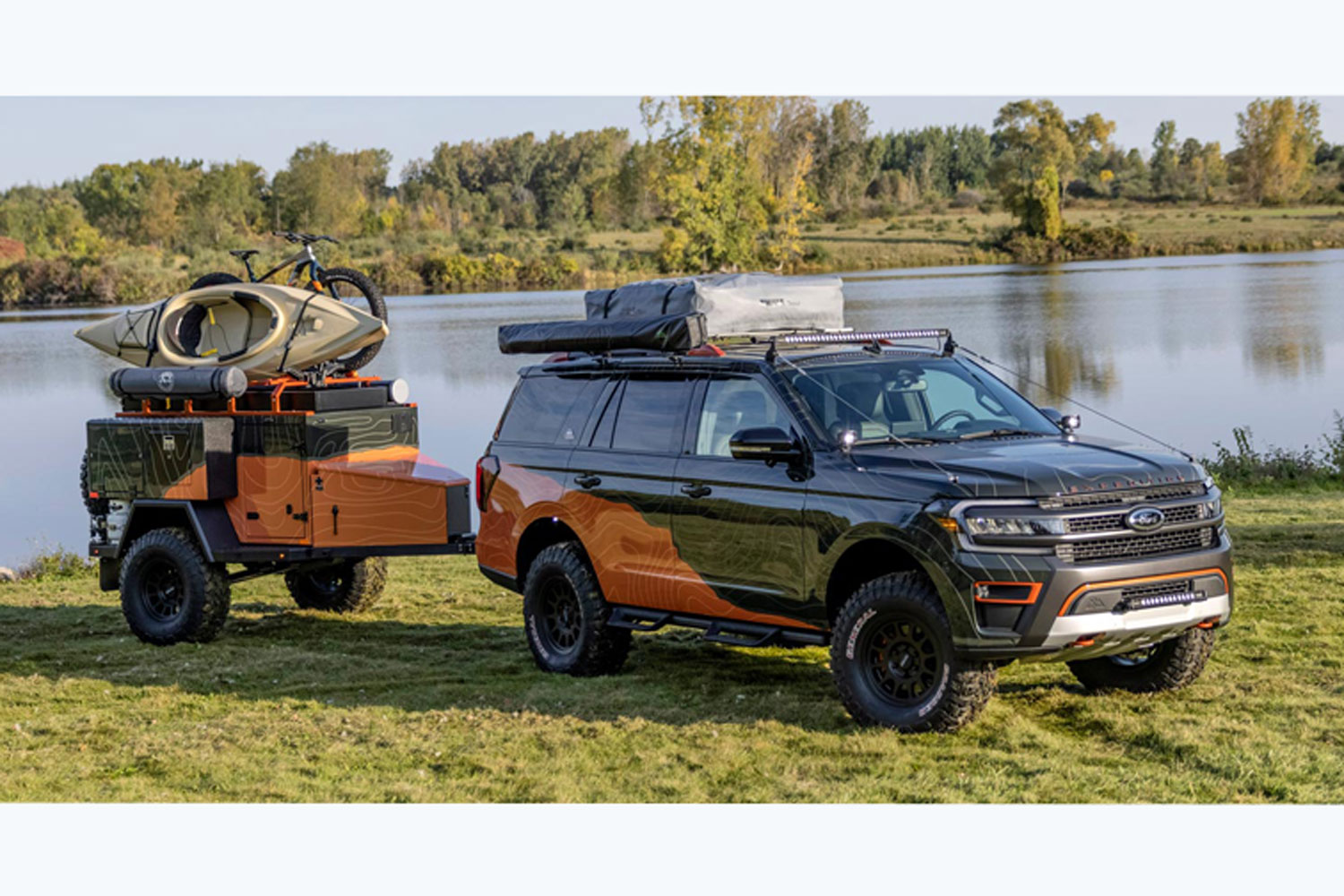What Is Overlanding? Here's an Explainer
Curious about going off-grid for a while? You'll need a rugged rig, extra gear, and a thirst for adventure.
 Ford
Ford
Article QuickTakes:
You’ve probably seen one in a shopping mall parking lot: a dirt-covered truck wearing knobby tires, a rooftop tent, and stickers telling the story of where it’s been. That’s a rig used for overlanding, and it’s not the same as one used for four-wheeling.
While four-wheelers are usually looking to push their trucks’ limits of speed and technical ability, overlanders go out for a slow long haul. Both groups emphasize exploring and enjoying our public lands, but overlanding for weeks at a time requires different equipment and skills.
One example of an overlanding rig is the decked-out 2022 Ford Expedition Timberline the automaker showed at the Overland Expo East in 2021, which is pictured at the beginning of this article.
Kitted out
You’ll need a reliable four-wheel drive vehicle with good tires and ground clearance, and enough payload capacity for all your gear. Be sure to have two spare tires and know how to swap them out. That means you’ll also need a jack and a breaker bar. You’ll likely be off-grid for long distances, so you might want to think about an auxiliary fuel tank. You should also carry an air compressor and a battery jump box.
Four-wheelers often go out in groups and rely on each other for help, but self-sufficiency is the name of the game in overlanding. You’ll need proper recovery equipment like a shovel and recovery boards. I like a sturdy DMOS shovel and a set of Maxtrax Extremes, but there are less expensive options. When you get stuck, you’ll use the shovel to dig out around your tires as much as possible, and the recovery boards will add traction under your wheels. If you get really stuck, you’ll want a high-lift jack and a winch. Keep in mind that these can be very dangerous if you don’t know how to use them, so be sure to get proper instruction in a safe environment, preferably before you get stuck.
Protective gear
Overlanders should also know the weak points of their rig and how to fix them. A voltmeter to diagnose electrical problems is indispensable, as is a tire plug kit. It’s also a good idea to have a fire extinguisher, a comprehensive first aid kit, and a spill kit to keep any of your car’s fluids from contaminating the ground. A set of fuses, extra fluids, radiator stop leak, spare hoses and belts, tie rods, and a spare front and rear shock should also be along for the ride.
You’ll also need gear to keep yourself alive, which means a way to carry or purify water, a tent — rooftop or otherwise — and a way to cook food. Your kitchen can be as humble as a Jetboil and a stack of dehydrated food packages, or as fancy as a multi-burner propane stove and an in-bed refrigerator. The only limit is your pocketbook.
Navigation and waste
There are myriad navigation apps out there, such as onX and Gaia GPS, but you should always carry a paper map and a compass and know how to use them. There are plenty of ways technology can fail.
Lastly, you’ll need a way to haul out your trash and possibly your waste. You should also learn tread lightly principles so you can be a responsible and ethical overlander. That means keeping to the trail and leaving it cleaner than you found it. Do your part to keep our public lands open, please.



